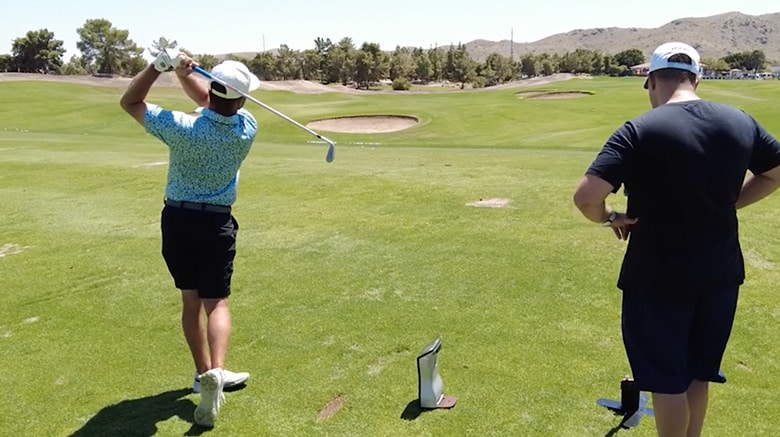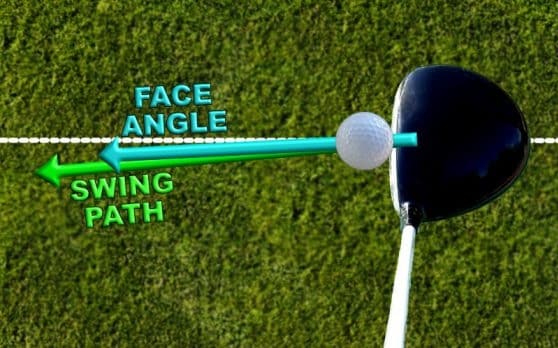Yes, golf simulators can accurately detect your slice! Premium systems like TrackMan achieve 99% accuracy by using radar and high-speed cameras that capture thousands of data points per second, analyzing your clubface angle and swing path at impact. Budget models hit around 80-85% accuracy, which is still pretty solid for identifying that clockwise spin causing your ball to curve right. However, indoor conditions can't replicate wind and uneven lies that affect real slices. Understanding these capabilities and limitations will help you get the most from simulator practice.
Modern golf simulators rely on sophisticated tracking technology to capture every detail of your swing and ball flight, converting what used to be guesswork into precise data you can actually use to improve your game. These systems use two main approaches to track your shots. Radar-based systems like TrackMan employ Doppler technology that follows your ball throughout its entire flight path, measuring everything from club path to spin rate with incredible accuracy. Camera-based systems take a different approach, using high-speed infrared cameras shooting at 500 to 3,500 frames per second to analyze those vital initial milliseconds after impact. Camera systems are positioned close to the ball for optimal data collection, allowing them to capture detailed information from both the swing and initial ball flight. The most advanced simulators combine dual tracking technology that uses both camera-based and infrared-based tracking methods for maximum accuracy. These sophisticated sensors and tracking technologies enable modern simulators to achieve over 90% accuracy in key metrics, making them highly reliable for analyzing your swing flaws. The key point—both technologies capture thorough data including ball speed, spin axis, launch angles, and club face angle, giving you the complete overview of what happened during your swing.

All this tracking technology becomes incredibly powerful regarding detecting your slice, and here's where the real science kicks in. Modern simulators use sophisticated algorithms that analyze multiple data points simultaneously. They're measuring your clubface angle, swing path, and spin axis in real-time to determine if you're creating that dreaded sidespin.
Here's the thing – when your clubface is open to your swing path at impact, you're imparting clockwise spin on the ball. The simulator's sensors detect this spin axis deviation instantly! Advanced systems combine high-speed cameras with radar technology, capturing thousands of data points per second. Machine learning algorithms then interpret this complex information, identifying slice patterns with exceptional accuracy. It's like having a biomechanics expert analyzing every microsecond of your swing. Leading simulators like Trackman and Golfzon consistently achieve 90-95% accuracy in measuring ball flight and spin data.
Advanced simulators can recognize out-to-in swing paths that commonly produce slices by measuring the club's approach angle relative to the target line. However, off-centre hits can sometimes compromise the precision of these measurements, which is why consistent contact remains important even during simulator practice.
When you're shopping for a golf simulator, the accuracy gap between premium and budget systems becomes pretty obvious once you dig into the numbers. Premium simulators like Trackman IO and Foresight GC3 deliver ball carry distances within 99% accuracy compared to your real shots. They use dual high-speed cameras and advanced radar technology to capture detailed spin rates and shot paths, giving you precise slice diagnostics.
Budget systems like the Rapsodo MLM2Pro still perform surprisingly well indoors, especially with marked balls. However, they're less accurate at detecting subtle slice factors like heel/toe impact effects. The fact of the matter is: premium systems track multiple parameters simultaneously without modifications, while budget models often need proprietary marked balls and frequent recalibration to maintain accuracy. Advanced systems like Trackman display ball flight data within 0.7 seconds, providing near-instantaneous feedback for swing analysis. Regular calibration and testing procedures are critical for maintaining precise ball speed measurements and overall system performance. High-end models can exceed $110,000 but deliver near-perfect accuracy for the vast majority of golfers.

These accuracy numbers sound impressive on paper, but you're probably wondering how golf simulators actually perform when put to the test by real professionals and industry experts.
Here's the thing—the industry sets the gold standard at 90% accuracy, with premium models like Trackman reaching 95%+ for slice detection. Professional golfers and club fitters regularly validate these numbers in real-world settings. They've found that simulators accurately track the spin axis and club path data that cause slices, matching outdoor observations remarkably well.
The validation comes through partnerships like Trackman's collaboration with Titleist, which developed specialized balls to improve indoor accuracy. Multiple industry analyses confirm simulators capture over 20 parameters crucial for slice detection, giving you the detailed feedback needed for improvement. Modern simulators utilize high-speed cameras and advanced sensors to capture precise club and ball movement data in real time.
Camera-based systems like SkyTrak capture multiple photos of the first few inches of ball flight using infrared technology to precisely measure ball behavior and calculate crucial parameters like spin and launch angle.
Trackman's Doppler radar technology enables full ball flight tracking that delivers precise data regardless of shot distance, making it particularly effective at identifying the specific ball flight patterns associated with slices.

While golf simulators deliver impressive accuracy numbers, they're not perfect—and understanding their limitations can save you from making swing adjustments based on flawed data.
Indoor conditions eliminate natural variables like wind and uneven lies that affect real slices. Your simulator's flat mat can't replicate how different turf textures influence ball spin. Lighting issues mess with sensor tracking—too bright or shadowy, and you'll get wonky readings.
Here's the thing: lower-end simulators only achieve 80-85% accuracy, which isn't enough for precise slice detection. Even premium radar systems estimate spin rather than measure it directly indoors. Camera-based systems work better but need perfect calibration. High-speed cameras operating at thousands of frames per second can capture detailed swing motion, but environmental factors still impact their effectiveness. The launch monitor technology that drives these systems varies significantly in quality and precision across different price points.
Your swing changes indoors too. Without real course pressure and feedback, you might compensate differently, creating artificial slice patterns that don't match your actual on-course performance. Poor setup can completely distort your game experience and create swing inconsistencies that don't exist on the course.
Simulators can definitely help you fix your slice, not just detect it! You'll get real-time feedback on your swing path and clubface angle, so you can make adjustments and instantly see how they affect ball flight. Many systems include training modes with slice-correction drills too. However, you'll still need coaching or instruction to identify the root cause of your swing flaws.
You'll need to spend at least $5,000 for reliable slice detection. Mid-range simulators in the $5,000-$15,000 range offer 85-90% accuracy with improved sensors that track clubface angles and ball spin. Premium models like Trackman cost $15,000-$30,000+ and deliver over 90% accuracy. Entry-level units under $2,000 lack precise slice detection capabilities, while professional-grade systems exceed $50,000 for tournament-level accuracy.
Indoor simulators don't detect slices better than outdoor launch monitors. Outdoor monitors like Trackman and GC2 actually provide more accurate slice detection since they measure real ball flight in open air conditions. Indoor simulators can accurately track your clubface angle and spin data, but they sometimes exaggerate curvature due to space constraints and modeling limitations. You'll get the most precise slice diagnosis outdoors.
Yes, simulators can detect slices with diverse golf ball types, though accuracy varies. Premium systems like TrackMan compensate for ball-specific aerodynamic properties and achieve over 90% accuracy regardless of ball type. However, budget simulators may struggle with multi-layer balls or unique dimple patterns since they affect spin rates differently. Radar-based systems handle ball variations better than camera-only models, maintaining reliable slice detection across different golf balls.
You should calibrate your simulator sensors monthly for ideal slice accuracy. High-volume commercial setups need weekly calibration checks, while home units can stretch to monthly intervals. Environmental factors like temperature and lighting changes affect sensor performance, so you'll want more frequent calibration in variable conditions. Most systems prompt you when calibration's needed—don't ignore those alerts! Regular calibration maintains the 90%+ slice detection accuracy manufacturers promise.
You'll find that premium golf simulators can absolutely detect your slice with impressive accuracy—often within 2-3 degrees of real-world measurements. Budget systems might miss some subtleties, but they'll still catch that banana ball you've been fighting! The key is understanding your simulator's limitations and using consistent setup. While no system's perfect, today's technology gives you reliable feedback to actually fix that slice instead of just wondering what went wrong.